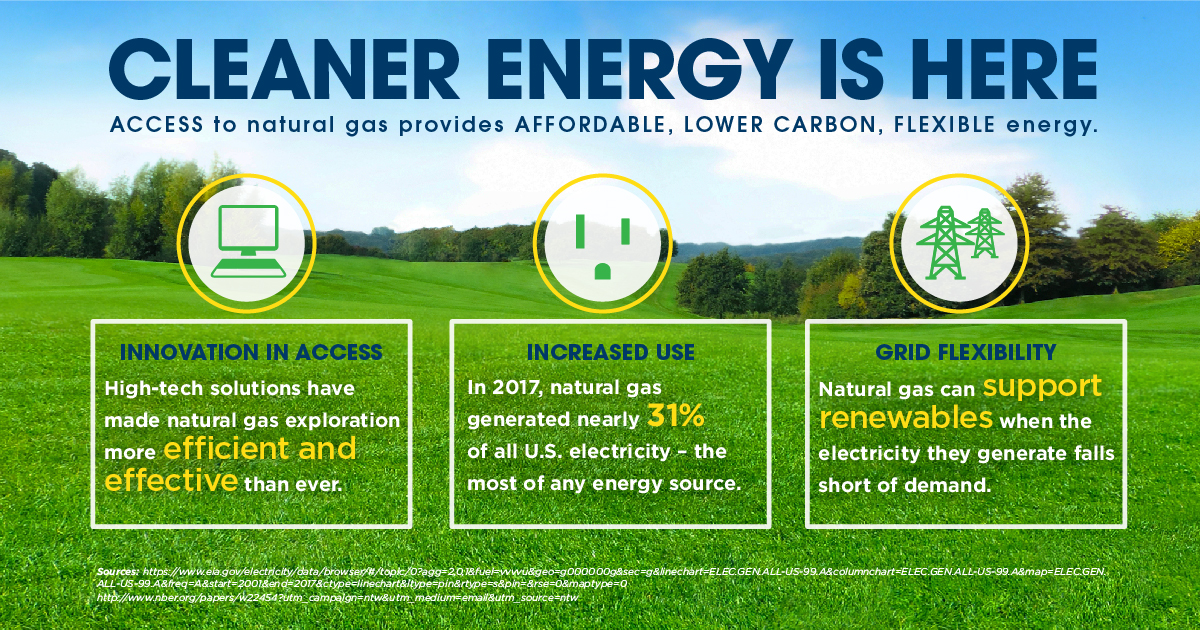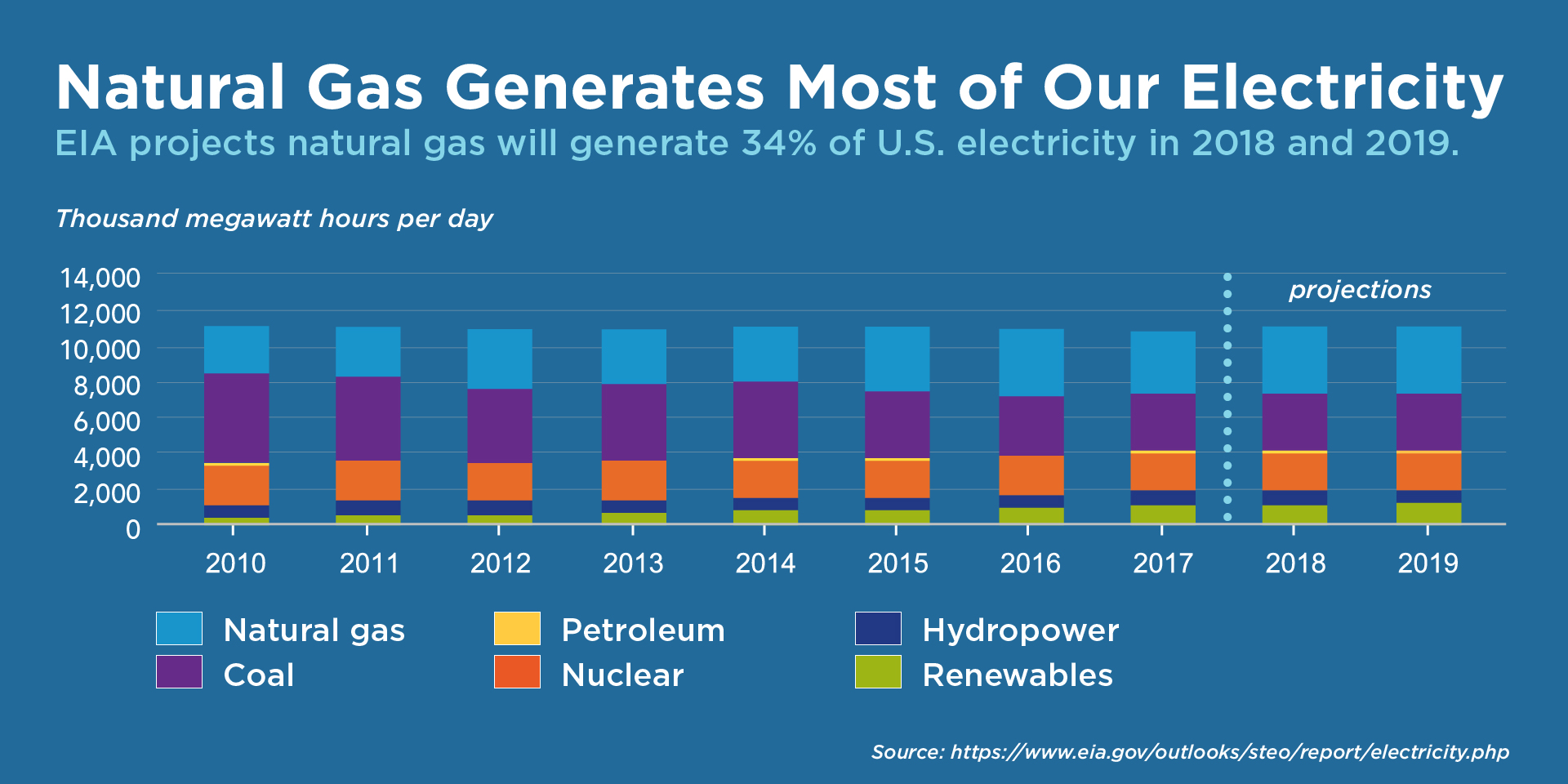Energy is Becoming Cleaner
The United States used 97.8 quadrillion British thermal units (Btu) of energy in 2016. That’s 3.5 times more energy than Russia used the same year. Burning fuel to meet these energy demands affects the environment, but a shift in the last decade to lower-carbon natural gas has had a significant impact.
Natural gas also emits less carbon dioxide (CO2) than other fossil fuel sources, so its greater use drives down the number overall. In fact, the U.S. Energy Information Administration’s (EIA) projections show that in 2019 energy-related carbon emissions will have decreased 13 percent from 2005.
Why has this shift occurred? Technology and innovation have provided access to abundant supplies of natural gas – an energy source that produces fewer emissions than other fossil fuels. Its increased availability has increased its affordability, making natural gas the leading choice for electric generation and supporting renewable energy.

Innovation in Access
Though people have used natural gas since 1000 B.C., innovations over the past few decades have improved the efficiency and effectiveness in how we extract it. Advanced technologies, like hydraulic fracturing and horizontal drilling, allow operators to access larger amounts of natural gas trapped in shale and other tight rock formations. While conventional vertical drilling requires spacing out many individual wells over a wide area, horizontal drilling allows for up to 20, or more, wells from a single surface location. Utilizing these techniques has reduced the surface footprint of natural gas development by 90 percent.
Continuously evolving technologies have pushed production to reach record highs by streamlining the extraction process. These innovations have also impacted the amount of methane emitted from hydraulically fractured natural gas wells, which dropped 14% between 1990 and 2016, even as production rose more than 50 percent.
Increased Use of Natural Gas
Increased access to natural gas has made it more abundant and affordable. This energy source fueled more than 31 percent of U.S. electricity generation in 2017, leading all other fuels and the EIA projects that number will rise to 41 percent by 2050. The surge stems from the construction of new natural gas plants to meet growing demand, in addition to replacing facilities that use more carbon-intensive fuel, like coal. This is already evident in regions like the northeastern U.S., where natural gas has nearly doubled its generation portfolio.

Flexibility for America’s Electricity Grid
A rise in renewable generation is another way power is becoming cleaner. These carbon-free technologies are an important part of our energy future, but most sources can’t produce energy 24 hours a day. For example, solar panels can only generate electricity when the sun is shining.
Natural gas can act as a stable back-up, providing power when renewables cannot. By quickly ramping up and down production to match the changing output from these emissions-free sources, natural gas has asserted itself as a key ally in bringing more renewables online. The benefits of this partnership are demonstrated in a 2016 study by the National Bureau of Economic Research, which found that for every 1% increase in natural gas’ share of electricity generation, there was a .88% increase in long-term renewable capacity.
The U.S. is primed to lead the way in clean energy development. Whether its providing cleaner baseload power, or integrating more innovative, variable renewable energy sources, natural gas is cleaning up our energy options.
